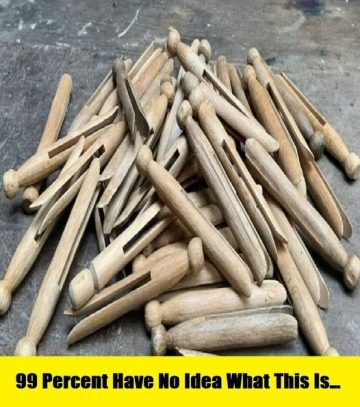Long before modern appliances doomed countless single socks to vanish in spinning limbo, people turned to clever, practical tools to tackle household chores — including one surprisingly simple invention.
One such tool is the wooden peg, which eventually evolved into a two-piece pin designed to hold clothes securely to a line. This was a major upgrade from earlier versions, which often let socks and other garments escape into the breeze — “a serious evil to washerwomen.”
Curious to know more about this humble wooden helper? Keep reading!
Recently, someone shared a picture online of small wooden dowels with two pronged legs, asking for help identifying the mysterious objects.
The post sparked a wave of responses, especially from nostalgic baby boomers who knew exactly what they were: “Old school clothespins. [We] used them for hanging clean wet clothes outside on the [clothes] line to dry in the sun [and] fresh air!”

A wooden clothespin — or clothes peg — is a classic household item used for securing wet laundry on a line to dry. Today’s versions usually consist of two wooden pieces joined at one end by a metal spring that gives them the grip to hold onto clothing.
From Ancient Origins to Everyday Use
The history of the clothespin stretches back to ancient times. People used a variety of materials to fasten garments while drying, including carved wood, bone, and even stone — often adorned with decorative patterns.
What we now recognize as the modern clothespin emerged in the 19th century. Early designs were made from solid wood, typically maple or birch, and consisted of two pieces joined by a small spring or wire.

